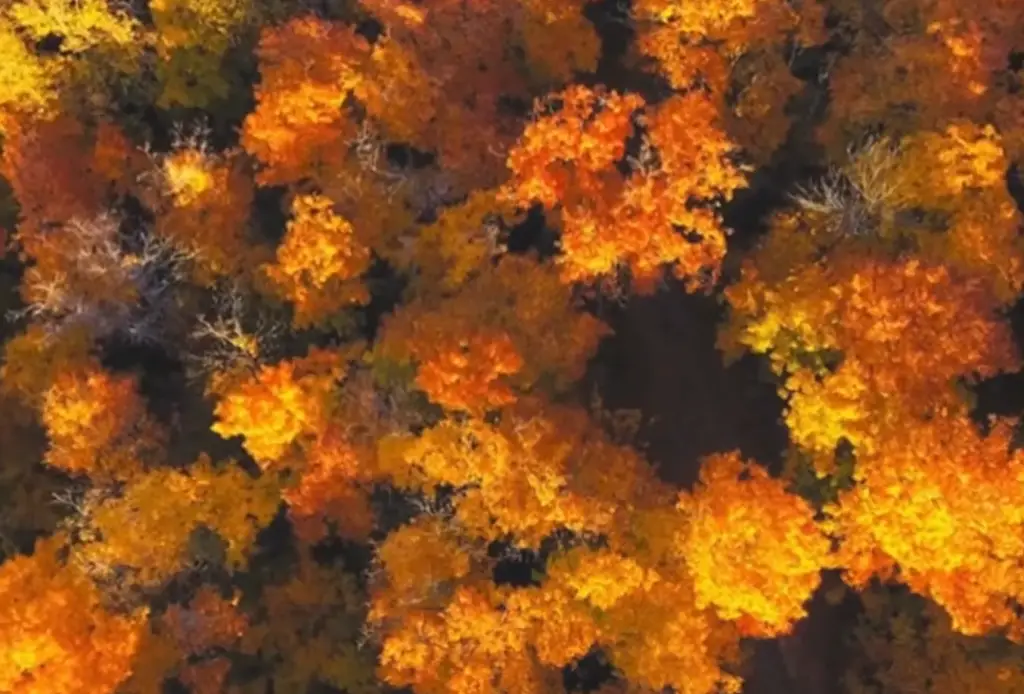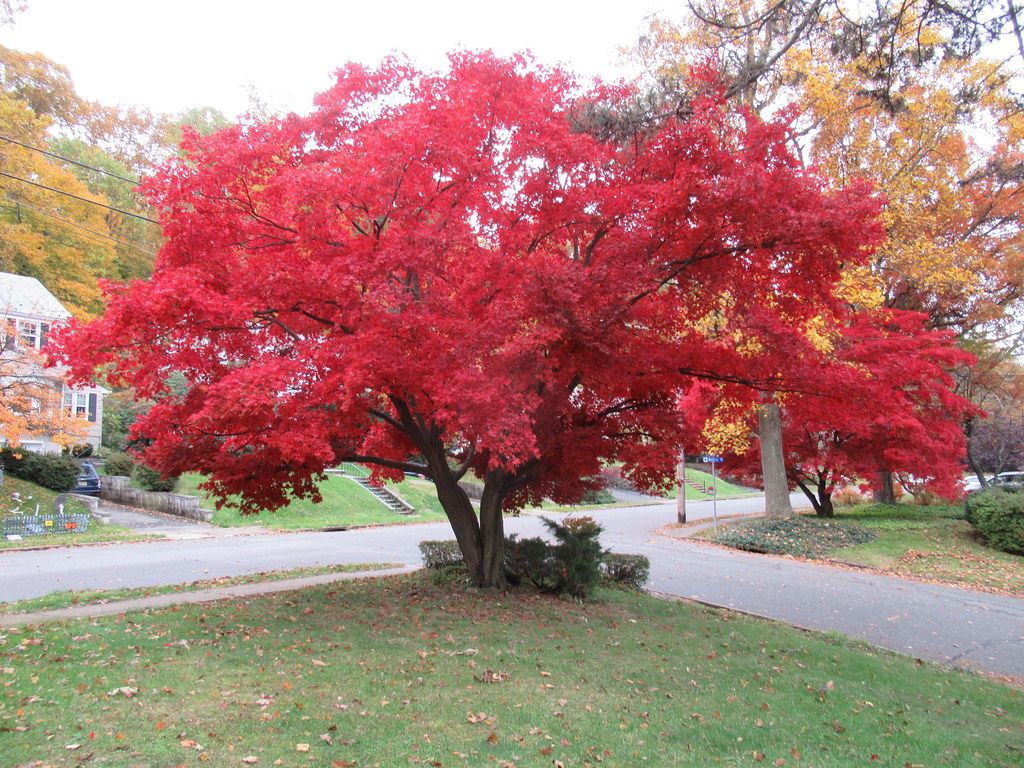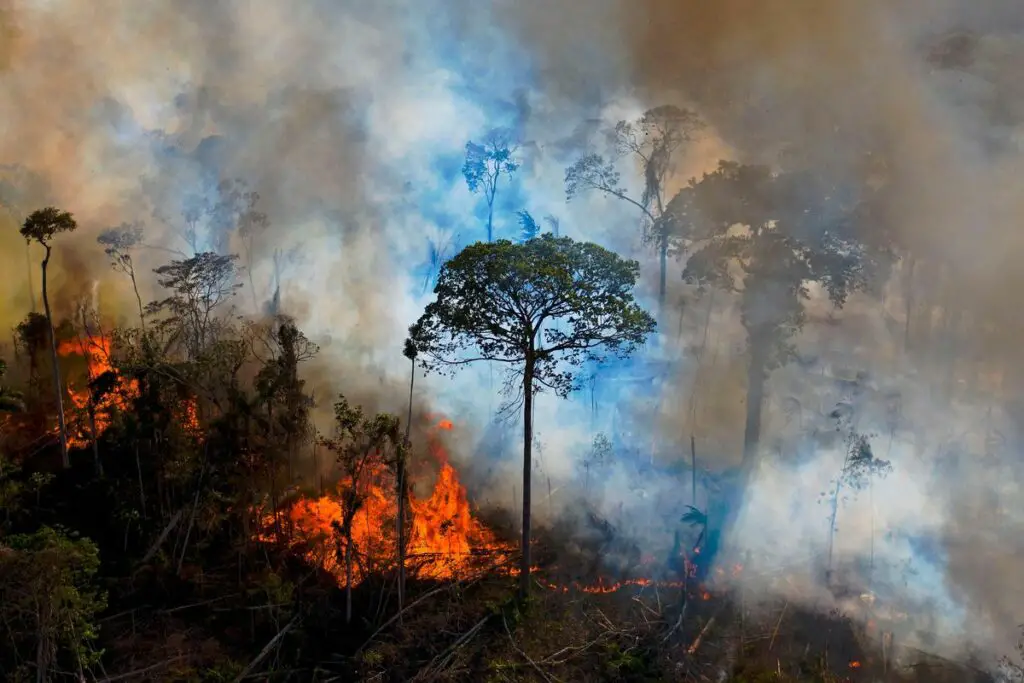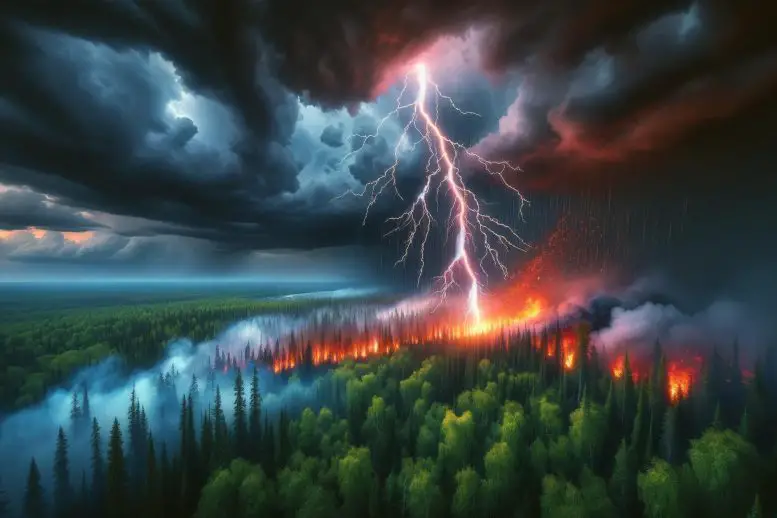Pacific Sunset Maple Pros and Cons (Acer truncatum x A. platanoides ‘Warrenred’) Pros: Brilliant fall foliage, fast growth. Cons: Susceptible to aphids and scale insects, may suffer from transplant shock if not handled carefully. Ensure proper care to maximize its aesthetic benefits while addressing potential challenges.
However, there are certain cons to be mindful of. Pacific Sunset Maples can be susceptible to pest issues, such as aphids and scale insects, which may require vigilant pest management. Additionally, like many trees, they may experience transplant shock if not handled with care during the planting process.
To maximize the benefits of this beautiful maple tree, proper care is essential. Adequate watering, well-drained soil, and periodic inspections for pests can help maintain its health. While the cons are manageable with proactive measures, the overall allure of Pacific Sunset Maple makes it a valuable addition to gardens, offering a burst of color and vitality in the fall landscape.
Pacific Sunset Maple Overview
The Pacific Sunset Maple (Acer truncatum x A. platanoides ‘Warrenred’) is a deciduous tree celebrated for its vibrant fall foliage, featuring striking red and orange hues. With a relatively fast growth rate, it establishes quickly in landscapes. However, it may be susceptible to pests like aphids and scale insects, necessitating careful monitoring. Overall, this maple is prized for its aesthetic value, making it a popular choice for those seeking a visually appealing addition to their outdoor spaces.
Features of Pacific Sunset Maple
- Foliage: The Pacific Sunset Maple is renowned for its striking foliage. In spring and summer, its leaves exhibit a lush green hue, creating a vibrant canopy. Come fall, the foliage transforms into a brilliant display of red and orange, adding a captivating burst of color to landscapes and making it a sought-after ornamental tree.
- Size: The Pacific Sunset Maple typically attains a medium to large size, making it an excellent choice for providing shade in landscapes. Its stature, combined with a distinctive branching pattern, contributes to its visual appeal. The tree’s size enhances its presence, making it a popular ornamental choice for various outdoor settings.
- Adaptability: The Pacific Sunset Maple exhibits versatility and adaptability to different soil types. While it thrives in well-drained soil, its ability to tolerate various conditions makes it suitable for a range of environments. This adaptability enhances its popularity as an ornamental tree for diverse landscaping needs.
Pros of Planting Pacific Sunset Maple
Planting the Pacific Sunset Maple offers several advantages:
- Stunning Fall Foliage: The tree is renowned for its vibrant red and orange hues during the fall, adding a striking visual element to landscapes.
- Fast Growth: With a relatively rapid growth rate, it quickly establishes itself in the environment.
- Shade Provider: The medium to large size of the tree makes it an excellent choice for providing shade in outdoor spaces.
- Adaptability: The Pacific Sunset Maple is adaptable to various soil types, contributing to its suitability for diverse landscaping situations.
- Aesthetic Appeal: The tree’s unique branching pattern and overall appearance enhance the visual appeal of gardens and yards.
- Versatility: Its adaptability and versatility make it a popular choice for different climates and landscaping preferences.
Planting this maple contributes not only to the beauty of the surroundings but also to the functional aspects of providing shade and rapid landscape enhancement.
Cons and Potential Issues Pacific Sunset Maple
The Pacific Sunset Maple (Acer truncatum x A. platanoides ‘Warrenred’) has some cons to consider:
- Pest Vulnerability: Susceptibility to pests like aphids and scale insects may require consistent pest management efforts.
- Disease Risk: While generally hardy, the tree can be vulnerable to common tree diseases such as leaf spot and canker, especially in less-than-ideal conditions.
- Transplant Sensitivity: Like many trees, it may experience transplant shock if not handled with care during the planting process.
- Space Requirements: Given its medium to large size at maturity, adequate space planning is crucial to prevent potential issues with nearby structures or other vegetation.
- Soil Sensitivity: While adaptable, the tree prefers well-drained soil, and issues may arise if planted in overly compacted or poorly drained soils.
These considerations underscore the importance of attentive care and proper site selection when cultivating Pacific Sunset Maple.
Pacific Sunset Maple Problems
One of the most popular maples for landscaping in North America is the Pacific Sunset Maple. This medium-sized deciduous tree is prized for its beautiful orange and red fall foliage, as well as its relatively fast growth rate. However, like all trees, the Pacific Sunset Maple can sometimes experience problems.
Here are some of the most common issues: Leaf scorch – Leaf scorch is a condition caused by a lack of water that results in brown or black patches on the leaves. It is most often seen during periods of drought or heat stress.
To prevent leaf scorch, make sure to water your Pacific Sunset Maple regularly during dry weather. Pest infestation – The Pacific Sunset Maple is susceptible to various pests, including aphids, scale insects, and borers. These pests can cause damage to the leaves, branches, and even the roots of the tree.
If you notice any signs of an infestation (e.g., yellowing leaves or unusual insect activity), contact a certified arborist or tree care company immediately. Disease – Like all trees, the Pacific Sunset Maple can be affected by diseases such as verticillium wilt and root rot. These diseases can be difficult to control and often lead to death of the tree.
Therefore, it’s important to choose a healthy tree from a reputable nursery when planting a new Pacific Sunset Maple in your landscape.
Shantung Maple Pros And Cons
Pros:
- Beautiful Foliage: Shantung Maples are admired for their attractive, deeply lobed leaves that turn vibrant shades of red, orange, or yellow in the fall.
- Drought Tolerance: These trees are relatively tolerant of dry conditions, making them suitable for regions with periodic water scarcity.
- Adaptability: Shantung Maples are adaptable to a variety of soil types and can thrive in different environmental conditions.
- Moderate Size: With a moderate size at maturity, they are suitable for a range of landscaping spaces.
Cons:
- Potential for Aphids: Shantung Maples may be susceptible to aphid infestations, requiring regular monitoring and pest control measures.
- Limited Shade: While providing some shade, Shantung Maples are not as large as other maple varieties, which may limit their capacity to offer extensive shade coverage.
- Variable Fall Color: The fall color can vary among individual trees and may not always exhibit the same intensity or consistency.
- Young Tree Sensitivity: Young Shantung Maples may be sensitive to extreme weather conditions, necessitating protection during harsh winters or hot summers.
Norwegian Sunset Maple
Norwegian Sunset Maple is a deciduous tree that is native to Norway. It grows to a height of 30-40 feet and has a spread of 20-30 feet. The leaves are dark green in summer and turn yellow, orange, and red in fall.
The flowers are small, white, and borne in clusters. The fruit is a small, winged seed. This tree prefers full sun to partial shade and moist, well-drained soil.
It is tolerant of urban pollution and salt spray. Norwegian Sunset Maple is an excellent choice for street trees, specimen trees, or as part of a mixed border. It is also suitable for bonsai cultivation.
Pacific Sunset Maple Growth Rate
The Pacific Sunset Maple grows quickly, adding 2 to 3 feet each year. In just a few years, this maple can reach 20 to 30 feet tall and wide! The Pacific Sunset Maple is a deciduous tree, meaning it will lose its leaves in the fall.
However, the new growth that emerges in the spring is a beautiful orange-red color that will add interest to your landscape all year long!
Crimson King Maple Pros And Cons
Pros:
- Distinctive Foliage: The tree is known for its striking deep purple or maroon foliage, providing a unique and attractive visual element in the landscape.
- Rapid Growth: Crimson King Maples are generally fast-growing, allowing for relatively quick establishment and providing a substantial presence in the garden.
- Shade Provider: With its large size at maturity, the tree offers excellent shade, making it a valuable addition for creating cooler outdoor spaces.
- Adaptability: These maples are adaptable to a range of soil types and can thrive in various environmental conditions, contributing to their versatility in landscaping.
- Low Maintenance: Once established, Crimson King Maples are generally low-maintenance, requiring minimal care beyond regular watering and occasional pruning.
- Urban Tolerance: The tree can tolerate urban conditions and pollution, making it suitable for planting in suburban and urban environments.
Cons:
- Large Size: The tree can reach a considerable size at maturity, requiring ample space in the landscape. This may not be suitable for smaller yards or confined spaces.
- Shallow Roots: Crimson King Maples are known for having shallow roots, making them more susceptible to damage from lawn equipment and environmental stresses.
- Leaf Drop: While the deep purple foliage is a notable feature, these trees can drop a significant amount of leaves, requiring regular cleanup in the fall.
- Surface Roots: The tree may develop surface roots over time, potentially causing issues with lawn maintenance or walkways.
- Less Drought Tolerant: Compared to some other maple varieties, Crimson King Maples may be less tolerant of drought conditions, requiring consistent watering, especially during dry periods.
- Limited Fall Color Change: Despite its deep purple foliage in the spring and summer, the fall color change is relatively minimal, with the leaves often turning brown before dropping.
Is Pacific Sunset Maple a Good Tree?
Pacific Sunset maple is a relatively new cultivar of Acer rubrum, the red maple maple tree growth. It was selected for its superior fall coloration, which ranges from orange to deep red. This deciduous tree grows best in full sun and moist, well-drained soils.
It typically matures to 40-50 feet tall with a spread of 30-40 feet. This maple makes an excellent specimen or accent tree in the landscape. Its upright oval to rounded form creates a pleasing outline in the garden.
In addition, its striking fall foliage adds another dimension of beauty to the landscape in autumn.
What are the Disadvantages of Maple Trees?
While maple trees are undoubtedly beautiful, they do have some disadvantages. Here are a few of the most notable:
- Maple trees tend to be quite messy, especially when they shed their leaves in the fall. In fact, many people actually consider this one of the biggest drawbacks to owning a maple tree. Not only do you have to deal with all the leaves on your own property, but if your tree is located near a street or sidewalk, you also have to worry about leaves blowing onto your neighbor’s property and creating a mess there as well. This can quickly become quite frustrating and time-consuming.
- They Require Regular Maintenance Maple trees also require regular maintenance in order to stay healthy and look their best. This includes tasks such as pruning branches, removing dead leaves and limbs, and applying fertilizer on a regular basis. If you’re not willing to put in the work required to properly care for your maple tree, it’s probably not the right tree for you.
- They’re susceptible to disease Like all trees, maple trees are susceptible to diseases and pests that can cause serious damage – even death – if left untreated. Some of the most common problems that affect maple trees include aphids, scale insects, borers, leaf spot fungi, and verticillium wilt fungus. While these problems can usually be controlled with proper care and treatment, it’s important to be aware that they exist nonetheless.
Do Red Sunset Maple Trees Have Invasive Roots?
No, red sunset maple trees do not have invasive roots. In fact, their roots are relatively shallow and spread out wide, making them ideal for use in landscaping. They are also tolerant of a wide range of soil types and conditions, making them adaptable to many different growing environments.
How Big Does a Pacific Sunset Maple Get?
The Pacific sunset maple is a deciduous tree that can grow to be between 20 and 30 feet tall. It has a round crown with dense foliage, and its leaves are large and palmate with five to seven lobes. The tree’s bark is smooth and gray, and its twigs are slender and reddish-brown.
The Pacific sunset maple is native to Japan, Korea, and China.
Red Sunset Maple Problems
Red Sunset Maple problems. Here are some common issues:
- Leaf scorch – This is when the leaves turn brown or black and eventually fall off. It’s caused by too much sun, wind, or drought stress.
- Branch dieback – This happens when the ends of the branches start to die. It’s usually caused by pests, disease, or poor drainage.
- Root rot – This is a serious problem that can kill the tree. It’s caused by wet soils and poor drainage.

Red Sunset Maple Vs Autumn Blaze
Red Sunset Maple and Autumn Blaze are two popular choices for landscaping in North America. Here is a comparison of the two: Size: Red Sunset Maple grows to be about 40-50 feet tall, while Autumn Blaze reaches a height of 30-40 feet.
Growth Rate: Both trees grow at a moderate rate of about 13 inches per year. Leaves: The leaves of the Red Sunset Maple are slightly smaller than those of the Autumn Blaze and have a deep red hue. The leaves of the Autumn Blaze tree are larger and more orange in color.
Fall Foliage: Both trees boast beautiful fall foliage, with the leaves turning shades of yellow, orange, and red before falling off the tree. Flowers: The flowers on both trees are small and not very noticeable. However, the Red Sunset Maple has red flowers while the Autumn Blaze has white flowers.
Fruit: Neither tree produces fruit that is edible for humans; however, birds and other animals enjoy eating the seeds from both trees
Red Sunset Maple
Red Sunset Maple (Acer rubrum ‘Sundance’) is a deciduous tree that is native to the eastern United States. It typically grows to a height of 40-60 feet and has a spread of 20-30 feet. The leaves are opposite, simple, and lobed with red margins.
The fall foliage is yellow, orange, and red. The tree produces small, red flowers in the spring followed by winged seeds (samaras). Red Sunset Maple prefers full sun to partial shade and moist, well-drained soils.
It is tolerant of a wide range of soil conditions but does not do well in wet or poorly drained soils. This tree is also tolerant of urban conditions and can be used as a street tree or in other landscape situations where space is limited.
Ruby Sunset Maple
The Ruby Sunset Maple is a beautiful hybrid maple that was created by Dr. William Ackerman in 1992. It is a cross between the Japanese Maple (Acer japonicum) and the Sugar Maple (Acer saccharum). The resulting tree is smaller than either of its parents, growing to only 20-30 feet tall.
It has a dense, rounded canopy and lush, deep green leaves that turn brilliant shades of red, orange, and yellow in the fall. TheRuby Sunset Maple is an excellent choice for small yards or gardens as it does not require much space to thrive. This tree is also relatively low-maintenance, making it ideal for busy homeowners who do not have time to constantly care for their trees.
If you are looking for a beautiful, easy-to-care-for tree that will add curb appeal to your home, the Ruby Sunset Maple is the perfect choice!
Frequently Asked Questions
How tall does Pacific Sunset maple grow?
The Pacific Sunset maple, also known as Acer truncatum ‘Pacific Sunset,’ is a medium-sized deciduous tree. It typically reaches a height of about 20 to 25 feet (6 to 7.6 meters) and has a spread of 15 to 20 feet (4.5 to 6 meters). However, it’s important to note that growth can vary depending on various factors such as climate, soil conditions, and care provided to the tree. Pruning can also affect the overall size and shape of the tree.
Is Pacific maple a hardwood?
The term “Pacific maple” is not specific enough to determine the exact species. However, many maple species, including those found in the Pacific region, are considered hardwoods. Maple wood is valued for its durability, strength, and diverse applications in furniture, flooring, and other woodworking projects.
What is Pacific Sunset maple Latin?
The Pacific Sunset Maple’s Latin name is Acer truncatum x Acer platanoides ‘Warrenred.’ It is a hybrid maple resulting from the crossbreeding of the Shantung Maple (Acer truncatum) and the Norway Maple (Acer platanoides). This specific cultivar, known for its vibrant fall foliage, is commonly referred to by its trade name, Pacific Sunset.
How big do sunset maples get?
Pacific Sunset Maples (Acer truncatum x A. platanoides ‘Warrenred’) typically reach a height of 35 to 45 feet with a similar spread at maturity. These medium to large-sized deciduous trees are valued for their attractive foliage and make a striking addition to landscapes, providing shade and vibrant fall colors.
Conclusion
When it comes to choosing a maple tree for your yard, the Pacific Sunset Maple is a great option. This deciduous tree is known for its beautiful fall foliage, which ranges in color from yellow to orange to red. It’s also a good choice if you’re looking for a maple that’s drought-tolerant and resistant to pests and diseases.
However, there are a few things to keep in mind before planting a Pacific Sunset Maple. First, it can reach up to 40 feet tall at maturity, so make sure you have enough space in your yard. Second, the tree has sharp thorns on its branches, so it’s not the best choice if you have small children or pets who might play under it.
Overall, the Pacific Sunset Maple is a beautiful and versatile tree that can add value to your home.
Related Topics
Insect Invasion: Threat to Utah’s Fir Forests
 Dr Ahsanur Rahman, PHD
Dr Ahsanur Rahman, PHD
UK Forests Collapse Imminent: Act Now Against Climate!
 Dr Ahsanur Rahman, PHD
Dr Ahsanur Rahman, PHD
Lightning Strikes Threat: Boreal Fires Jeopardize Carbon
 Dr Ahsanur Rahman, PHD
Dr Ahsanur Rahman, PHD










